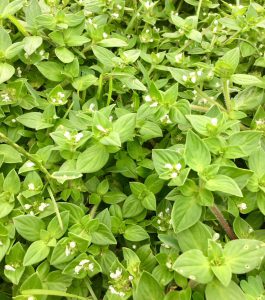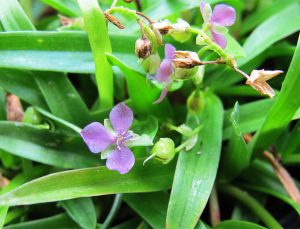
Based on the calendar and day temperatures the narrow window of opportunity to use preemergence herbicides in lawns has arrived. But not every lawn needs an application of preemergence herbicide now – only those lawns that have a history of summer annual weeds.
When used correctly, preemergence herbicides form a chemical barrier on the soil surface that prevents annual weeds from pushing through or emerging. When you see annual weeds, it’s too late to use a preemergence herbicide.
The key to good control with this kind of chemical is to apply it to the lawn before summer annual weeds emerge, hence the name preemergence. Germination can vary from year to year. However, if you intend to use a preemergence herbicide, you need to apply it during mid-February to early March when day temperatures reach 65°F to 70°F for 4 to 5 consecutive days. This will be just before summer annual weeds emerge.
Use preemergence herbicides primarily to control summer annual weeds such as crabgrass, goosegrass, spurge, Florida pusley, doveweed, sandbur and poorjoe. There are others.
Preemergence treatments offer some advantages:
- Since the herbicide is applied before annual weeds emerge, susceptible weeds never show up in the lawn.
- There are few to no postemergence herbicides to control grassy weeds such as crabgrass in centipedegrass or St. Augustinegrass lawns.
- Except for herbicides that contain atrazine, most ornamental trees, shrubs and flowers are tolerant to preemergence herbicides. Some preemergence herbicides that contain DCPA, oryzalin, benefin and pendimethalin are labeled for use on some ornamentals. Most postemergence herbicides can injure ornamentals.
- Most postemergence herbicides can cause slight injury or temporary yellowing in lawns. Preemergence herbicides typically don’t cause noticeable injury to established lawns.
Use preemergence herbicides only on lawns that have been established for at least a year. They can severely injure freshly seeded or sprigged lawns.

Don’t apply a preemergence herbicide if the lawn will be seeded, sprigged or sodded in the spring or early summer. These herbicides persist in the soil for 2 to 4 months and can interfere with turfgrass establishment.
A second application may be needed 6 to 9 weeks after the initial application for season-long control, especially in lawns with a history of heavy annual weed populations.
Preemergence herbicides for lawns are sold under a number of trade names. The UF/IFAS Extension Office in your County or lawn and garden stores can help you select a preemergence herbicide.
Be sure to select one that’s labeled for use on the lawn species you have. And, always follow the label directions and precautions when using any pesticide, including herbicides!
 1
1
